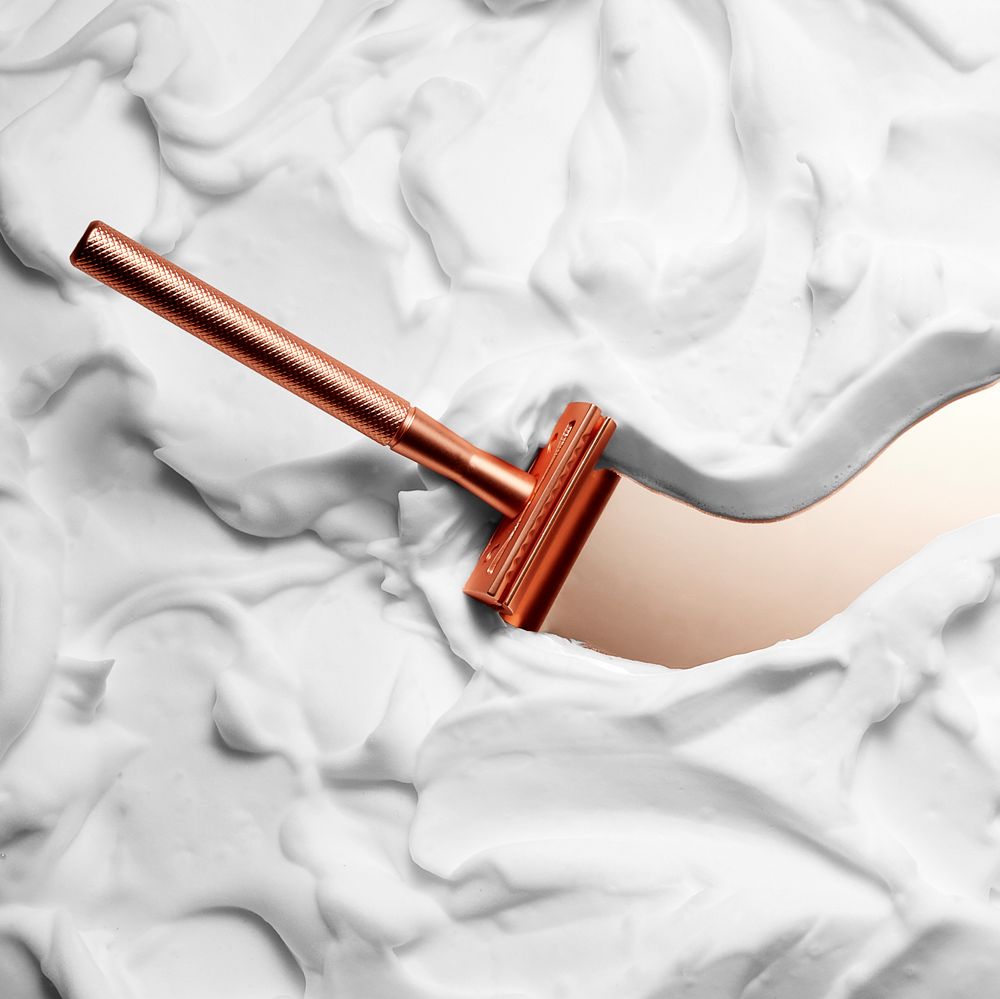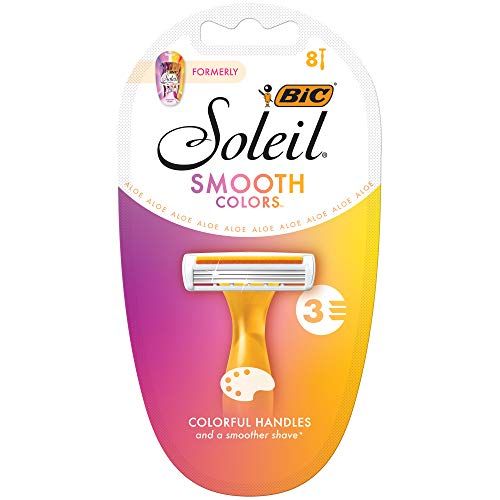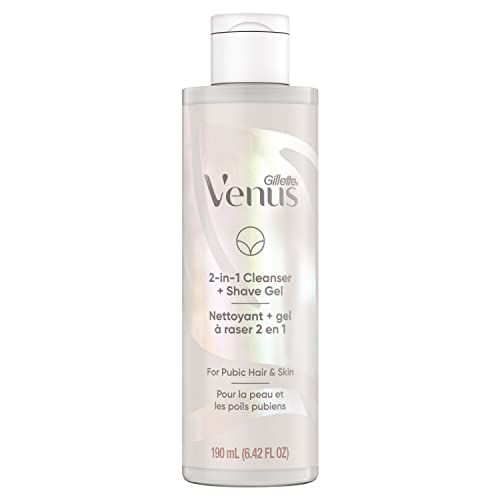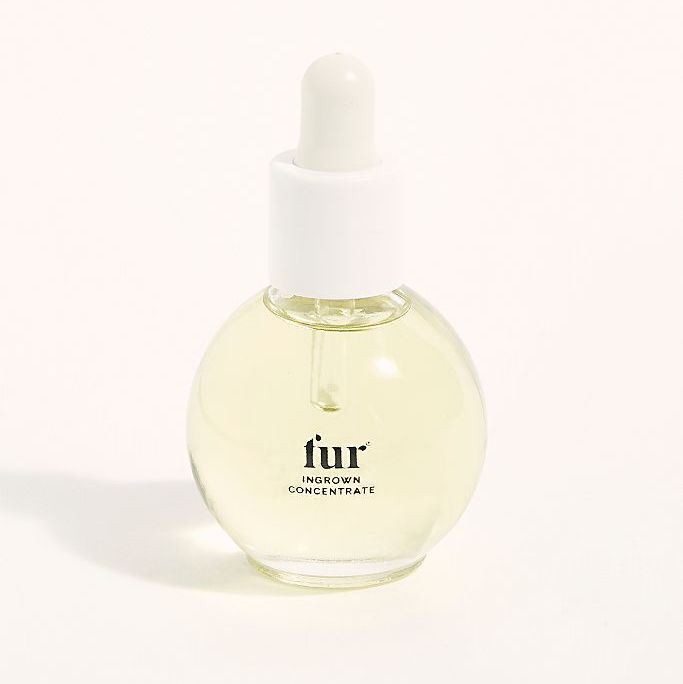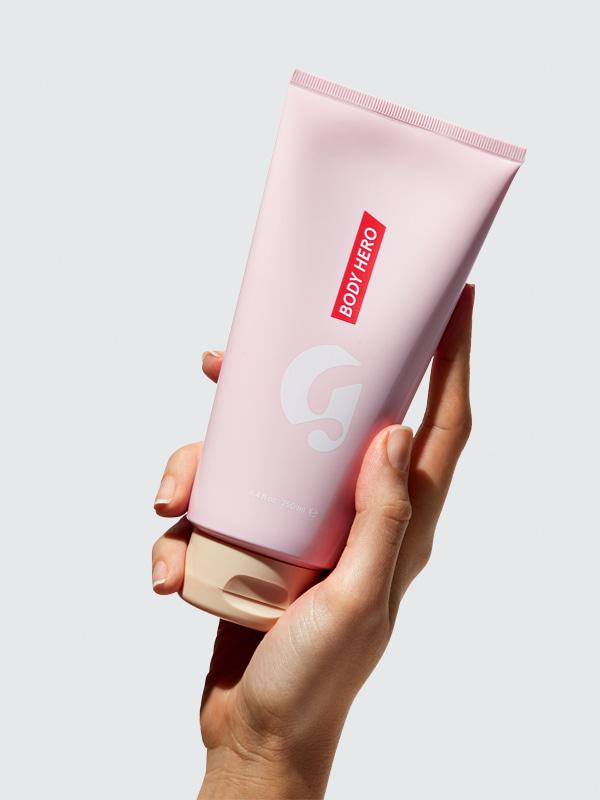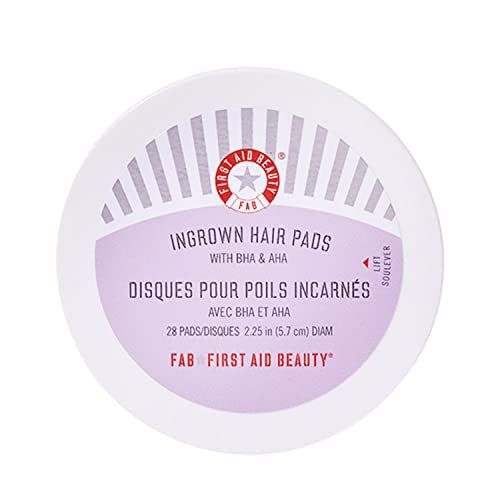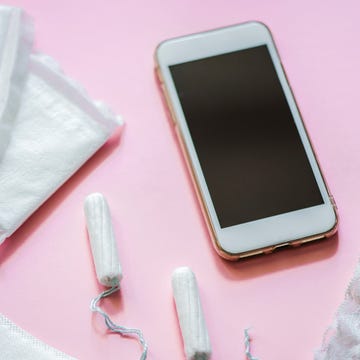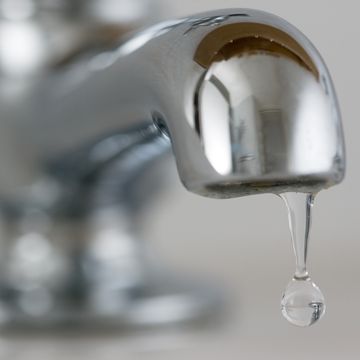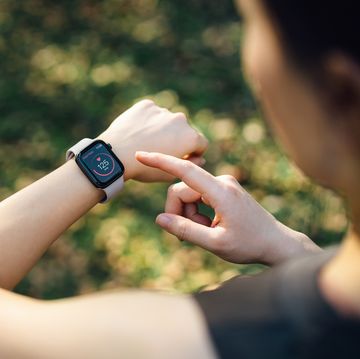Whether you're a newbie or have been shaving your bikini line for a long time, you know it takes the right tools and steps to make it through the process unscathed. That means no skin irritation, razor burn, or ingrown hair. After all, the last thing you want is to be in pain or itching during your vacay or beach day.
First, let's get clear on what your bikini line is. That's the hair found around your bikini bottom, the more general region where pubic hair grows, says dermatologist Lindsey Zubritsky, MD.
Here's why it's important to pay special attention when you're removing hair down there: The most common reason for irritation in this area is improper shaving techniques, says Dr. Zubritsky. And the bikini line “is particularly prone to razor bumps because pubic hair is thicker, coarser, and curly, and tends to grow back into the skin,” she explains.
More From Women's Health

So, a quick swipe of the razor may not actually be the quick and painless alternative that you imagined it to be. Plus, shaving your bikini area is a lot of work. It’s time-consuming, hard to keep up with, and easily irritated, especially if it’s not done safely and properly. Here's what you need to know before the razor is in your hand for a smooth shaving experience (and skin afterwards!).
Meet the experts: Lindsey Zubritsky, MD, is a dermatologist and an editor for the Journal of the American Academy of Dermatology. Gina Charles, DO, is a family physician. Ife J. Rodney, MD, is a dermatologist and dermatopathologist in the Baltimore-Washington Metropolitan area.
Wait, is it bad to shave your bikini line?
First of all, removing hair anywhere on your body is completely your decision—don't listen to anyone who tells you otherwise, or feel pressured into shaving, waxing, or using any other hair removal method.
If you do choose to shave your bikini line, you may be up against both ingrown hairs and red, itchy bumps.
"Ingrown hairs are formed when the sharp, freshly shaved hairs, puncture and grow into the surrounding skin," explains dermatologist Ife J. Rodney, MD, the founding director of Eternal Dermatology + Aesthetics. Then, the skin reacts to those hairs and can get red and itchy as a result.
You might also experience razor burn after shaving, which is basically when the razor removes the top layer of soft skin, allowing bacteria to form red bumps on the inflamed skin, she says.
However, many people (45 percent in this 2016 survey report grooming down below for a vacation, and 55 percent say they've groomed before sex) who remove pubic hair use a razor, which is totally fine for your skin, as long as you are careful.
"To prevent rashes and irritation, you should only shave with a clean, sharp razor," Dr. Rodney says. On top of that, if you moisturize and care for the skin before and after you shave, you can avoid annoying razor burn.
Read on for more expert-approved shaving tips before you jump in the shower.
1. Invest in a good bikini razor.
Picking the right razor is the first step to ensuring your bikini line is smooth and bump-free. "If there are more blades, it dispenses more pressure, allowing each blade to cut with less force but more effect," says Dendy Engelman, MD, a dermatologic surgeon at Shafer Clinic Fifth Avenue in New York City. In other words, you'll get a better, closer shave without risking a cut or irritation.
"Choosing a firm, sturdy razor with soothing strips will make a huge difference," adds Eileen Bischoff, esthetician and hair-removal specialist at Eve Salon in New York City. While throwaways are great for use while traveling and can get the job done, they’re labeled "disposable" for a reason. "They’re not meant to be used for a month," she says.
Or, there's the option of single-blade stainless steel safety razors, which have become popular especially to reduce plastic waste. Believe it or not, they're just as safe as a regular plastic razor for your skin, even your bikini line, says Dr. Rodney. "With only one pass, you remove the hairs completely. There’s less trauma to the skin surface, and the hairs are cut bluntly, decreasing the risk of ingrown hairs," she explains.
2. Prep to prevent ingrown hair on your bikini line.
When it comes to ingrown hairs, there are steps to take to keep your skin clean and clear. “Preventive measures include exfoliating prior to shaving and waxing, using a sharp, clean razor, not shaving against the grain, and moisturizing post-shave,” says Gina Charles, DO, a family physician and the owner of Serenity Aesthetics & Wellness.
To be more specific, spend about 10 minutes in warm water first. This will help soften the outer layer of your skin, making it easier to remove hair (and lessen your chances of getting razor burn), says Fumi Ozaki, an esthetician and electrologist in Redondo Beach, California. "After the 10 minutes are up, pat the skin dry to remove any excess water," she says.
Once your bikini line has been cleaned and dried, Dr. Engelman suggests lightly exfoliating with a wet washcloth or a scrub to remove dead skin cells, allowing the blade to get closer to the skin. "It teases out any stubborn ingrown hairs prior to shaving," she says.
Dr. Charles also votes for a gentle physical exfoliant to “buff away dead skin cells, product buildup, and oil found on your skin. If you omit exfoliating, you run the risk of that razor driving dead skin and 'gunk' into your pores.” Her faves include the Dove Exfoliating Body Polish scrub and Eau Thermale Avène Gentle scrub.
3. Don't skip shaving cream.
Always make sure you’re shaving when the skin is damp and with a gel or lotion. You might think this shaving accessory is just a feel- and smell-good component to the process, but it’s way more than that.
"When you shave, you’re shaving your skin, too," says Bischoff. "If you don’t use enough shaving cream to create enough slip, you’ll lightly abrade your skin, leaving it irritated." Ouch.
And don't just reach for a random, cheap shaving cream. "Use a good-quality shaving gel with a short list of moisturizing ingredients, like shea butter, olive oil, and coconut oil—these types of bases will give a proper buffer for your razor," says Dr. Engelman.
“Gillette Venus Intimate Grooming 2-in-1 cleanser and shave gel is one that I've found most effective,” says Dr. Charles.
Apply a very thin layer only to the area that needs to be shaved so you can see the skin and hair shaft underneath. "This is much safer, so there’s no need to move the blade back and forth on the skin," says Ozaki.
4. Pay attention to your shaving direction.
People have a lot of opinions about whether you should shave up or down on your bikini line, and the direction you shave does matter.
“It’s important to always shave in the direction of hair growth (not against it), use a sharp razor blade every time, and avoid pulling the skin taut while shaving,” says Dr. Zubritsky.
Going in a ton of different directions with your razor makes cuts and subsequent ingrown hairs more likely, explains Bischoff.
While gliding your razor gently along the bikini line, keep the blade downward without adding too much pressure. "One pass should be fine, especially if you’re using a razor that has many blades," says Ozaki. "The more blades used, the fewer times you should feel the need to re-shave over this sensitive area."
5. Calm your skin after shaving the bikini area.
Wash off as soon as you put your razor down, and hold a cold compress to the area for 10 minutes to prevent irritation, says Ozaki. Apply an anti-redness serum (preferably fragrance-free) to further reduce your chances of experiencing razor burn.
Dr. Charless likes the Aveeno Daily Moisturizing Body Lotion and Eau Thermale Avène Xera Calm AD Lipid Replenishing Cream as post-shave moisturizers.
You should moisturize the area once a day, advises Dr. Charles. “Applying an anti-inflammatory agent,” like a topical over-the-counter hydrocortisone cream, “helps reduce inflammation and itchiness.”
"I recommend tea tree oil, both a natural anti-inflammatory and antiseptic, which can help calm razor burn," says Dr. Engelman. "If you’ve really caused some irritation, more intense creams, like topical steroids, can be prescribed to reduce redness, swelling, and pain."
6. Moisturize, moisturize, moisturize.
It’s important to always hydrate and moisturize after shaving. "Apply an unscented, alcohol-free moisturizer to both sides of the bikini line to lock in the moisture and avoid over-drying, which leads to further irritation," says Dr. Engelman.
Bischoff suggests looking for products containing soothing aloe vera, as well as jojoba oil and vitamin E for hydration.
7. Clean your bikini razor.
After every shave, make sure to sanitize your blades with rubbing alcohol and warm or hot water. If your razor looks rusty and you’ve been using it for a while, toss it out. "Replace old blades—ones you’ve used for more than five to seven shaves," says Dr. Engelman.
You can also cut your losses (and avoid those red bumps) by storing blades in a clean, dry place so they don't pick up bacteria sitting around in the shower.
8. Soothe ingrown hair and razor bumps.
If red bumps do pop up after shaving, there are many way you can minimize the discomfort.
Dr. Charles recommends applying aloe vera gel to the bikini line for 30 minutes. This can help reduce the redness, inflammation, and itchiness. A warm compress soaked in water with 10-15 tea tree oil drops could loosen the ingrown hair while calming the redness and inflammation.
If the ingrown is stubborn, as many tend to be, try a chemical exfoliator containing lactic acid or glycolic acid to the hair. "These acids help break down the congested hair follicle,” says Dr. Charles.
Dr. Zubristky likes using alpha and beta hydroxy acids a few times a week to remove dead skin cells. She is a fan of First Aid Beauty’s Ingrown Hair pads. A warm bath with Epsom salt can also help loosen the hair, she adds.
Although ingrown hairs can often resemble a pimple when inflamed or infected, it is important to “never attempt to pick, pull, or pop at your ingrown hair,” warns Dr. Zubritsky. “This may result in permanent scarring or infection.” And don't shave again until the irritation has subsided and the bumps or ingrowns have healed.
Instead, spot-treat the bumps with La Roche Posay’s Effaclar Duo Dual Action Acne Treatment. “In general, ingrown hairs self-resolve and last anywhere from a few days to a week or so,” says Dr. Zubritsky. “However, some ingrown hairs can persist longer, especially if there is an infection.”
Left unattended, they can progress into an abscess or even scar and keloid, says Dr. Charles. So, if your ingrown is sticking around or you’re frequently struggling with these pesky hairs, it’s time to seek help from a medical professional.
9. If shaving bothers your skin, there are other options.
Shaving might not be the right move for everyone's skin. If you still prefer to be smooth, waxing, either by a professional or with an at-home wax kit, is a safe and gentle choice because it removes the hair from the root and doesn't allow bacteria to enter as easily, says Dr. Rodney.
"When the hair grows back, the tips are soft, not sharp, and so it's less likely to cause ingrown hairs," she says. Plus, waxing often lasts longer than shaving does, with hair growing back at a slower rate.
For an even longer-term option for sensitive skin, laser hair removal might be for you to avoid the need to shave altogether.
